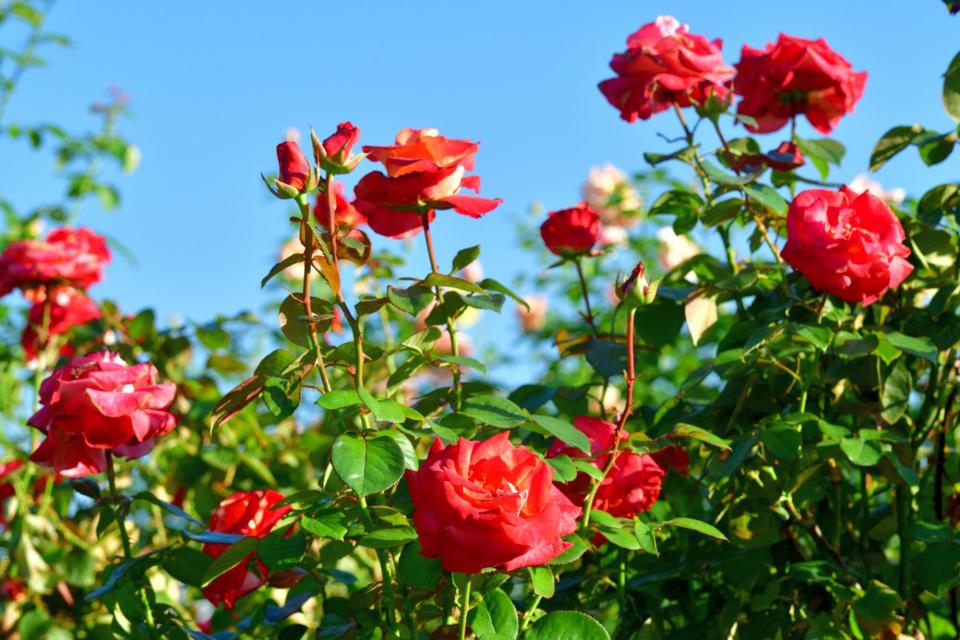A Month-by-Month Guide to Caring for Your Roses
Roses are flowering shrubs that come in a variety of sizes and shades, making them perfect for most landscape designs. The species' color palette is virtually all encompassing (aside from true blue and black) and might appear as solids, blends, stripes, splashes, or two sided bi-color petals, says Laurie McMinn, a rose garden horticulturist at the Lewis Ginter Botanical Garden. Many roses will average five bloom cycles in a growing season, which means that giving them the best care throughout the year should result in a big—and beautiful—payoff. Ahead, McMinn explains exactly what you need to do, and when you need to do it, in order to get the very best show from your roses.

magicflute002 / Getty Images
March
Begin pruning your roses when the forsythia in your neighborhood bursts into color, explains McMinn. "Buds should be just starting to swell, and that makes it easier to cut canes to direct new growth outward for good air circulation," she says. "Light pruning, which includes removing dead, diseased, crossing, and small canes, produces the largest spring blooms, while hard pruning (reducing to half its size) produces more blooms." If you have newer plants (under two-years-old) you should prune them lightly until they are established.
Next, it's time to fertilize. "After pruning and cleaning beds of old leaf litter, fertilize with a 15-9-12 slow release formula or epsom salts scratched into surface—then cover with about one inch of mulch. Climbers are heavy feeders and get a boost halfway through the growing season with liquid fertilizer," notes McMinn, adding that March is also the right time for transplanting.
April through August
During most of your plant's growing months, you will repeat this step over and again: Use a preventative spay to help with leaf spot. This should be applied as soon as leaves open and during hot humid weather. "Deadhead Hybrid teas, Grandifloras, and Floribundas after blooms are spent and keep beds clean of petals and leaves," explains McMinn. "Monitor for insects and pick off or treat in high populations." You can keep a plastic jar with a lid filled with soapy water handy to trap bugs more easily. "Provide deep watering during dry spells and monitor newly-planted roses," she says. And if your roses grow out of their allotted space during the growing season, you can prune them during these months to reshape them.
September and October
Discontinue pruning your rose canes at this point in the season so that new growth has an opportunity to harden off before winter. You can also deadhead as needed. "Dormant oil in winter helps with insects and fungus," McMinn explains, adding that you should discontinue treatment once the temperatures get above 70 degrees—and never apply it to new foliage, which can burn.
November through February
During your roses' down time, you can cut back long canes on tall upright cultivars, ramblers, or climbers (so they don't get wind whipped over the winter). McMinn suggests snipping these rose types back by a third. "Some cultivars have beautiful rose hips for winter interest," she says, which is something you'll want to consider before pruning them off.

